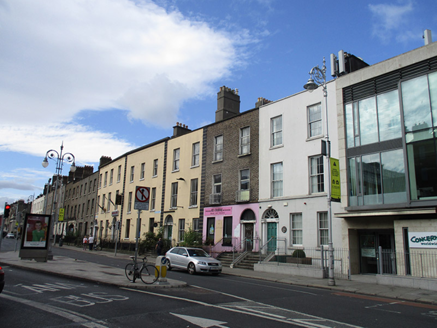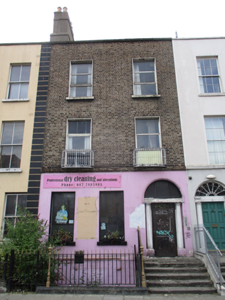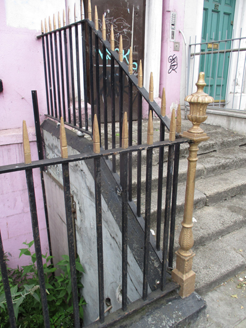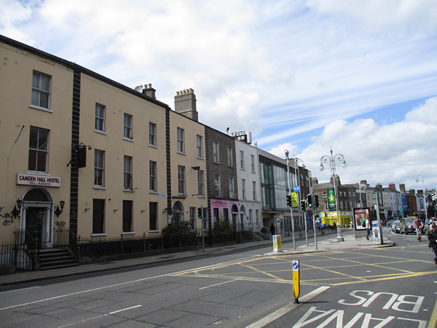Survey Data
Reg No
50110419
Rating
Regional
Categories of Special Interest
Architectural, Artistic
Original Use
House
Date
1810 - 1830
Coordinates
315608, 232867
Date Recorded
22/07/2017
Date Updated
--/--/--
Description
Attached two-bay three-storey former house over basement, built 1820, having return to rear (west) elevation. M-profile roof, hipped to north, partially hidden behind brown brick parapet with cut granite coping. Rendered chimneystacks having some clay pots. Brown brick, laid in Flemish bond, to walls to front (east) elevation, with rendered walls to ground floor and basement walls. Granite plinth course. Rendered walls to rear. Square-headed window openings, having granite sills, continuous granite sill course to first floor windows, and raised render reveals, replacement windows. Balconettes to first floor. Round-headed door opening with doorcase comprising Doric columns and entablature. Replacement steel door, tripartite fanlight. Cut granite steps and platform flanked by replacement railings. Basement area enclosed by replacement railings on masonry plinth wall, having matching pedestrian gates and cast-iron corner posts with urn finials.
Appraisal
This building retains much of its early form and character, enhanced by the well-proportioned openings and Regency-style doorcase that were popular in the early nineteenth century. The front boundaries remain intact, contributing to the early character of the streetscape. Its survival has ensured the Late Georgian terrace of which it is part of can be read as a whole. Casey (2005) describes how 'Nos. 50-51 together with Nos. 1-12 Camden Street Upper constitute the most complete and satisfying terrace on the street: large houses of c. 1815, three-storey over basement, all originally of brown brick with tall piano nobile windows, Adamesque doorcases, granite area parapets and old-fashioned railings with urn newels'. According to Casey (2005) 'Camden Street came into being in 1778, named after Charles Pratt, 1st Earl Camden'. However, much of the street was rebuilt in the nineteenth and twentieth centuries.'







